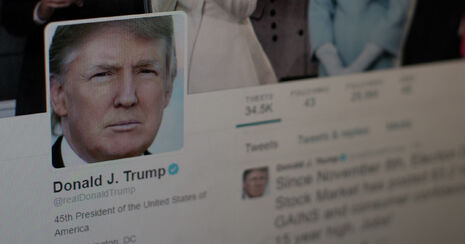Did technology win Trump the White House?
The internet has been central to political expression in the months between President Trump’s election and his inauguration

The 21st century has seen technology entering the hands of almost everyone on the planet. Inventions such as the internet, social media and smartphones have allowed for a level of connection and communication on an international scale never seen before. The decentralisation of communication outlets that has accompanied the steep decline in prices of consumer tech has made digital technology so accessible that it has facilitated a revolution in the way politics is carried out and perceived in the public sphere, shaping new modes of campaigning and activism.
The use of social media defined the 2016 American presidential race. Our narrative of its figureheads was provided not through filtered traditional media but, at least on the Republican side, direct from the horse’s mouth – Trump’s Twitter feed. In a world of political smoke screens and dodgy closed-door deals, many welcomed Trump’s openness, regardless of its sporadic and often contradictory nature. The slick career politician persona Hillary adopted was never able to emulate the Twitter personality of her competitor, a flaw in her campaign recognised only too late with her riposte to Trump – “Delete your account” – in what became her most shared tweet to date.
“Social media has given a voice to the voiceless, lifting the gaze of traditional sources of news and comment and empowering citizens to engage with and vocalise the issues”
Memes have played an integral role in the rise of the alt-right in the US, which uses this popular, infectious medium to propagate an agenda of extreme conservatism, helping legitimise racist views. Versions of the Pepe the Frog meme became particularly prevalent during the US election, spreading racist thoughts into the minds of many, so much so that the Anti-Defamation League added the meme to their database of hate symbols in 2016. Their popularity and fecundity has given the group a platform that 20 years ago would have been impossible, allowing for smaller political groups to voice their opinions and, in so doing, democratising expression. Yet some have questioned whether all alt-right memes are indeed political, or are instead a mechanism of generating attention and eliciting the backlash each post generates.
Information technology proved its power when women, men and children took to the streets across the world on January this year for the Women’s March, drawing in 4.8 million people worldwide. The protest aimed to show the public distaste towards the narratives and policies proposed by Trump during his run, setting the tone for his first months of office. The story began with Teresa Shook, an ordinary woman from Hawaii, setting up an event page for a putative march on election night, receiving over 10,000 responses the following morning. Within two days, the foundations of the march were laid down by Shook and experienced activists. Integral to the extreme trajectory of its project was the internet, the decentralised medium that allowed ordinary people to connect to share their concerns and organise to do something about them.
The internet is here to stay and the profound effects it has had on government, smaller political groups and individual political expression has revolutionised the way in which power changes hands and how power is used. Social media has given a voice to the voiceless, lifting the gaze of traditional sources of news and comment and empowering citizens to engage with and vocalise the issues. It mobilises individuals to bring about the change that they want, for better or for worse. The long term effects of this dramatic shift in communication and interaction will be revealed in the years ahead, especially in the Global South, as technology becomes increasingly affordable. One thing, however, is clear: we are now global citizens whether we like it or not, able to engage with people we may never see and voice our opinions for all the world to hear
 News / CUP announces funding scheme for under-represented academics19 December 2025
News / CUP announces funding scheme for under-represented academics19 December 2025 News / Cambridge welcomes UK rejoining the Erasmus scheme20 December 2025
News / Cambridge welcomes UK rejoining the Erasmus scheme20 December 2025 News / SU reluctantly registers controversial women’s soc18 December 2025
News / SU reluctantly registers controversial women’s soc18 December 2025 Film & TV / Timothée Chalamet and the era-fication of film marketing21 December 2025
Film & TV / Timothée Chalamet and the era-fication of film marketing21 December 2025 News / News in Brief: humanoid chatbots, holiday specials, and harmonious scholarships21 December 2025
News / News in Brief: humanoid chatbots, holiday specials, and harmonious scholarships21 December 2025








